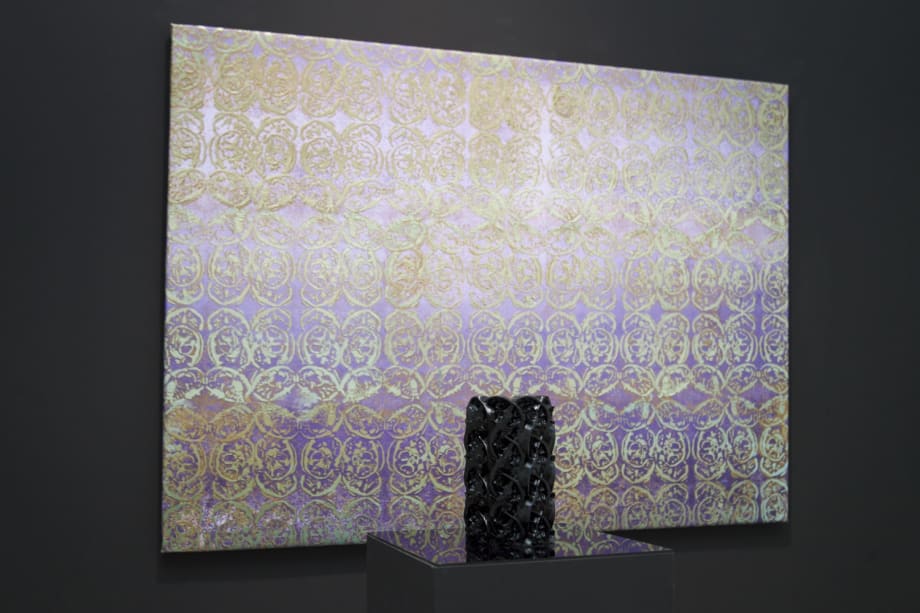Through the genre of still life, Heep and Regl explore the disappearance of things. The exhibition Grammar of Disappearance consists of ten paintings and ten sculptures that are digitally modelled and produced alternately, in a call and response mode. The initial call comes from Regl's painting "Still Life with Passion Fruit" (2017), a large-scale monochromatic oil painting from which Heep extracts objects to place in the digital environment and model them. During the modeling process, a grenade is cut into slices, wrapped around the frame, and reworked to weave repeating shapes. A deer beetle emerges and sinks back into the flexible, massless materials of the model. At calculated intervals, Heep chooses a shape to represent it in three dimensions. Regl responds to the 3D impression with its own representation on canvas. Using a palette of purples, greens and blues, she creates tapestries based on the amalgamation of the everyday objects that Heep presents. And so the dialogue between the two artists continues.
Through the interaction between the inanimate matter and the animated process, the representation becomes notational, while the works themselves acquire layers that make them more exuberant. With each iteration, "Still Life with Passion Fruit" becomes more exalted, even as it progressively moves away from view. The result is a series of works that alternate between materialization and abstraction, where the "humble" things of the still life become ornamental.
The exhibition is part of ATC's Basic Research programme, a platform that encourages the production of interdisciplinary and collaborative works. It is the first time that ATC invites an artist and an architect to create a set of works for the gallery space in collaboration.
Eldine Heep was born in Delhi, India, and now lives and works in Vienna. She studied architecture at the University of Applied Arts in Vienna and at the Academy of Fine Arts in Vienna. After completing her degree in architecture in 2007, Heep was awarded the MAK Schindler Scholarship, a residency in Los Angeles. She has worked as an architect on projects in Vienna and Beijing. Besides teaching at the Institute of Architecture (Studio Hani Rashid) at the University of Applied Arts in Vienna, she works on independent projects at the intersection of design, art and architecture. Her work has been shown in multiple group shows, including "Compressed Complexity" at the Venice Architecture Biennale or "Dragonfly" in Archmoscow, Moscow.
Bianca Regl was born in Linz and now lives and works in Vienna and Beijing. She studied painting at Ateliers de Beaux-Arts in Paris, UFG Linz, the Academy of Fine Arts in Vienna and the University of California, Los Angeles (UCLA). His work has been widely exhibited internationally. She has exhibited at the Niuchang Museum, Beijing; Leopold Museum, Vienna; Essl Museum, Vienna; University Museum, Hong Kong; Kunsthalle Krems, Krems; Museo Vitraria, Venice; Ferdinandeum, Innsbruck; BA-CA Kunstforum, Vienna; Kunstraum Innsbruck, Innsbruck; and Museum am Ostwall, Dortmund. Since 2010, she is the director of the non-profit art space OFF空, in Beijing, China (www.blackbridgeoff.com).
